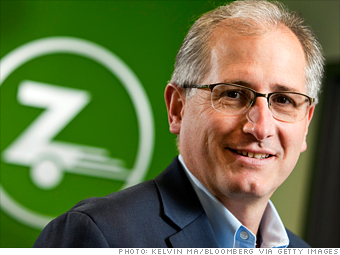Scott Griffith had a recipe for Zipcar in 2003, and he followed this throughout his tenure surpassing $500 million in annual revenue last year, the leader in the car-sharing business.
Social responsibility is at the core of the Zipcar mission, Griffith said in a presentation at a
recent startup accelerator celebration at Alpha Loft in Manchester, New Hampshire. The lead components are sparing the planet tons of carbon dioxide and saving consumers money, continuous themes that have been foundational with the user community.
The key operational elements were external and internal: to stick with the basics – saving users money and positioning car-sharing as social responsibility in large city markets – and adapt/evolve to meet emerging needs as the company grew. Annual sales, $3-4 million in 2003 and $500 million 10 years later, overcame the bandwidth of the initial management team, and the necessary top-level team was brought in.
The big-picture view of the future was based on a car-sharing model in which people in all the major cities could walk to the self-service Zipcars. The dedicated Zipcar model would by synonymous with fun, honest, clever innovation and social good/urban living. Car sharing is seen as a lifestyle that will continue in the long run.
Global trends of the early 2000s supported the Zipcar mission for rapid growth. Fuel at $4.00 a gallon, and costs of parking and maintenance all contributed to making car sharing popular. Self-service access to cars near work and home brought convenience and savings that were very appealing. Reducing the carbon footprint, cutting the number of cars on the road, was a key driver in the mission to reduce car ownership in urban areas.
Another global trend that has been an important part of Zipcar’s business model is consumer behavior. Growth of pay-per-use and self-service fit with the model’s simplicity theme. It requires minimal time to select one of the many user plans, reserve the car online, and getting to the car to unlock the car with the Zipcar identification. Then you just drive! All the gas, insurance and mileage are included. When the user is done, the car is just returned to its reserved spot.
From the time Griffith came on board, his plan to achieve rapid growth was based on five strategies:
- Keep it simple. Learn from those companies that were transformational – Apple, Google, Ikea.
- Obsess about the member experience. Develop Proprietary Purpose-Built Technology.
- Be the best we can be. Focus on getting the business model right before launching into “extreme growth” mode.
- Deliver results.
- Have an impact. Focus on replacing car ownership rather than automating car rental.
With creative marketing, Zipcar was able to establish a dedicated following of people who value social responsibility and positive environmental activity. Griffith also established a unique brand through partnership with several top global brands, car manufacturers, numerous transit agencies, universities and city and state governments that transformed Zipcar into the leader in its industry.
Scott Griffith played a critical role in building the business by adapting it to meet both internal and external needs. He brought in some very influential members to the board of directors, grew the business through organic growth and acquisitions, and raised venture funding as needed.
His take-away message to the Alpha Loft accelerator group in Manchester was applicable to all entrepreneurs and business leaders:
“The most important catalyst in growing your company is you and your ability to transform yourself. Write down five-ten value statements for yourself. Who are you today, and where do you want to be in five years? Be sure your values apply to you and your business goals and execution.”
Adapting to the changing needs of the marketplace is a mission-critical part of any business. Scott Griffith relied on mentors and consultants to address systemic problem or deficiencies in his business plan to get where he needed to be. Experienced outside perspectives can bring significant value for critical hiring decisions, market timing and goal setting. How you utilize your abilities to recruit the talents that best dovetail with the business needs is paramount in accomplishing your goals and objectives.
Successful leadership in those matters enables company transformation. It requires leaders to have an introspective discipline, knowing their own abilities and limitations. As Scott Griffith said in closing:
“If you can’t transform yourself to adapt to the needs of the business, hire someone who can and move out of the way.”

